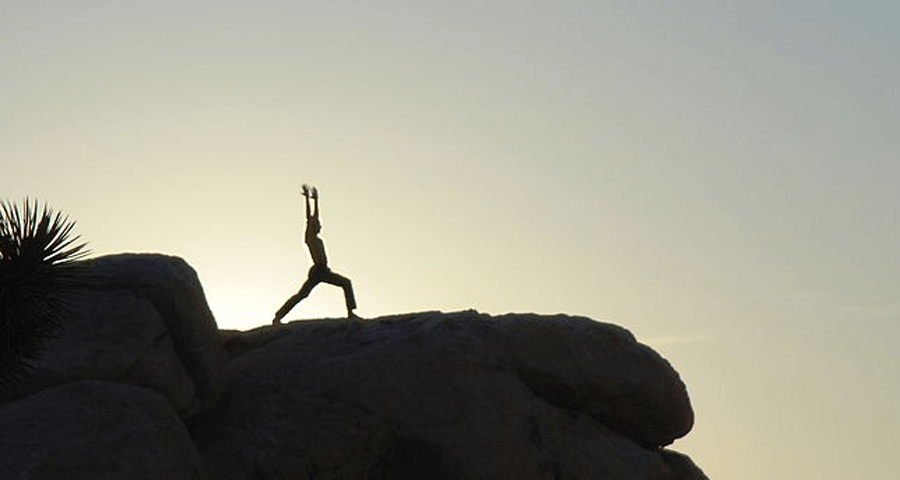Warrior I Pose (Virabhadrasana I) is a timeless teacher that calls for patience and continuous refinement over years of practice.
This asymmetrical standing asana (we’re doing something different with each leg) opens us to establishing a stable yet resilient foundation for opening the hips, extending the spine, and opening the shoulders. It develops strength and flexibility and gives us insight into more complex asanas possibly to come, such as One-Leg King Pigeon Pose (Eka Pada Raj Kapotasana).
Warrior I is probably most commonly placed early in the practice as part of the dynamic flow of the Sun Salutations, where one inhales into it and exhales right out of it. In some teachings the student is also asked (even required) to first root the back heel in and down before stepping the other foot forward. In Ashtanga Vinyasa one comes to this fairly complex asana very early in the practice, without having done anything to open the external rotators of the hips that makes it all more …yep, accessible.
Such an approach as well as the nuances of how it’s specifically taught can make Warrior I unnecessarily difficult and more likely to result in injury than stability and ease (which Patnjali tells us is vitally important in doing asana).
10 Basic Tips on Teaching Warrior I:
- Offer other standing asanas first to better prepare the legs and hips.
- In doing Sun Salutations, offer Crescent Pose (Ashta Chandrasana, the Eight-Point Crescent Moon Pose) instead of Warrior I. Unlike Warrior I, Crescent does not place twisting effects in the back knee and makes it easier (more accessible) to evenly align the hips and to position the pelvis more level with the floor, thus reduding pressure in the lumbar spine.
- Consider doing a series of externally-rotated hip standing asanas first to better warm and open the legs and hips for the more demanding internally-rotated hip asanas such as Warrior I.
- Eagle Pose (Garudasana) is excellent for opening the external rotators and is highly recommended before doing internally rotated hip standing asanas.
- In keeping with the basic sequencing principle of moving from simple to complex, consider offering the Intense Side Stretch Pose (Parsvottanasana) before doing Warrior I to better prepare the feet, ankles and legs for Warrior I.
- If approaching Warrior I from Downward Facing Dog Pose (Adho Mukha Svanasana), cue students to first extend their right leg up behind them on the inhalation, to lift the left heel as high as possible, and then to slowly step the right foot forward.
- Next, cue the alignment of the front knee over the heel, rooting of the back heel in and down, and alignmentof hte front foot with the back heel – or a wider laternal stance of the student has tighter hips.
- Now come up to standing with straight legs and teach pada bandha in the back foot and how it helps (makes more accessible) the internal rotationof the back leg which is the source of that hip moving forward toward alignment with the other hip.
- Ask students to bring their hands to their hips, to position their levis as level as they can, then to slowly bend the front knee back into alignment over the front heel while keeping the pelvis as level as possible, then to release their arms down and turn their palms out to make it easier to draw the arms overhead. Cue the drawing the floating ribs in while elongating the spine, thus minimizing the backbend.
- Once in position, if students feel tension in the back knee cue doing Crescent Pose instead. If students report tension in their low back or front knee, cue partially straightening the front leg.
Approaching Warrior I in this way when it is first given in a sequence makes it far more accessible. As you later cue students to perhaps come into this asana in a single phase of breath, they will be better prepared to do it in a way that’s safe, sustainable and more sensibly transformational.
